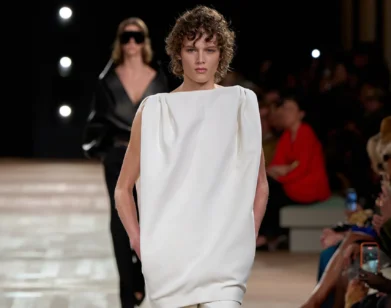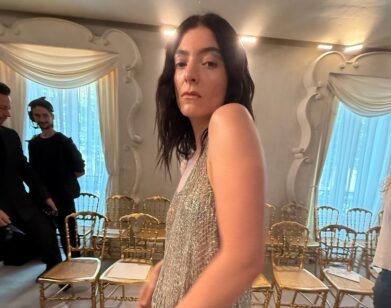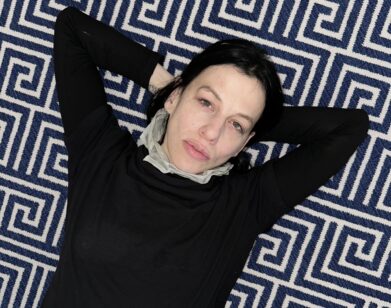Anne Imhof is Creating Hard-Core Performance Pieces that Speak to the Anxieties of a New Generation
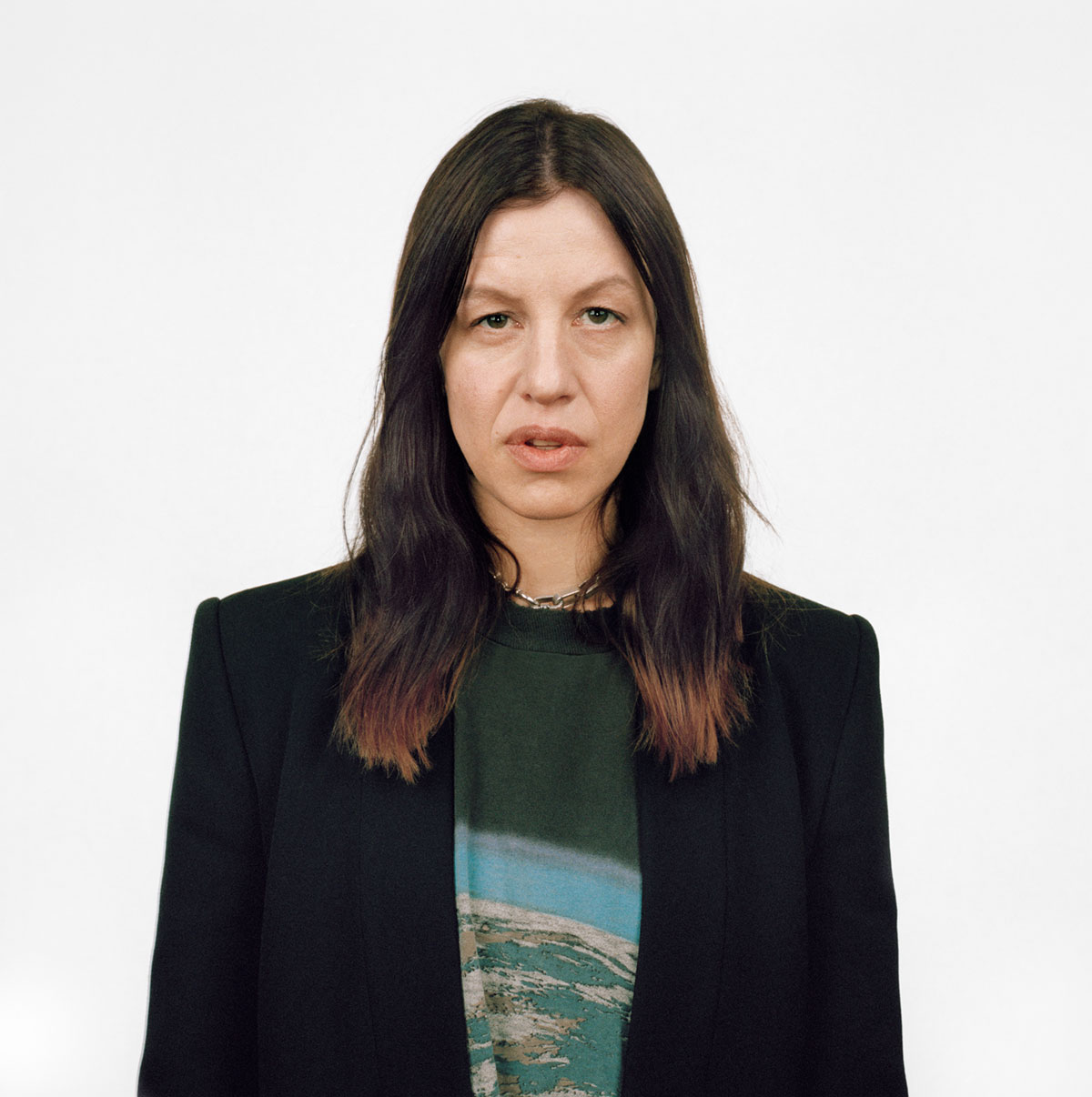
At the 2017 Venice Biennale, a relatively unknown artist commandeered the German Pavilion, filling the stripped-down, minimalist bunker with militant wire fencing, patrolling Dobermans, a raised glass floor, and a band of skeletal, sexily blasé, stone-faced performers (including the artists Eliza Douglas and Billy Bultheel) who posed, lounged, glared, and perched on canted glass ledges. Periodically they would sing, scream, slowly drift through choreographed movements to music, crawl on the ground below the glass floor, headbang, and start fires. The ringleader of this generational tableau was the Gießen, Germany–born artist Anne Imhof, and if most visitors hadn’t heard her name before the Biennale’s opening, they couldn’t escape hearing it after arriving in Venice. Imhof’s brash, in-your-face performance-endurance piece, entitled “Faust,” was simultaneously celebrated and criticized for its brooding nihilism, for its resemblance to the visual language of fashion and advertisement, for its glorification of youth cults, for its sincerity and its cruelty and its boredom. In the end, Imhof stole the show in Venice and she was awarded the Golden Lion. Of the thousands of contemporary artworks on display that year in Venice, most of us who attended can only recall the disturbing energy and provocation of “Faust.”
In truth, the 40-year-old artist didn’t come out of nowhere. She’d been honing her idiosyncratic merging of music, dance, performance, drawing, painting, lighting, technology, attitude, and endurance in the cultural capitals of her native Germany. It’s no surprise that she spent a lot of time in nightclubs in her twenties, just as it’s no surprise that she approaches her multi-multi-disciplinary works much like the staging of an opera (with its fusion of elements ranging from the orchestra and libretto to the costumes and sets). In 2016, Imhof presented her own three-act opera, “Angst” (each act unveiled in a different city: Basel, Berlin, and Montreal), that included among its dark atmospherics a hooded falcon, drones zooming around the performers, smoke machines, mobile phones, and ominous choral chants. This March, she will present her next large-scale durational performance work—along with new paintings, drawings, and sculpture—at London’s Tate Modern. The artist has spent the past few months locked away in her Frankfurt studio for rehearsals and preparation. But she found time to talk to her friend, the Vetements and Balenciaga stylist Lotta Volkova, about what attracted her to art and music and the awesome power of open-ended collaborations.
———
LOTTA VOLKOVA: You are in Frankfurt right now, aren’t you?
ANNE IMHOF: Yes. I’m working on my new show, so I’m in the studio most of the time.
VOLKOVA: I thought you were moving to Berlin a couple months ago?
IMHOF: No. In this phase of transition, I’m a nomad. I’m moving constantly between Berlin, Frankfurt, and occasionally New York, so I’m never really in one place. But it’s kind of good for the work.
VOLKOVA: I know the feeling. I love to be everywhere and nowhere at the same time. It keeps you on your toes. Let me start with the most banal question: What made you want to be an artist?
IMHOF: I’ve always wanted to be an artist. I was quite young when I started drawing and it became more intense around the age of 14. I went to boarding school in England for a year and had a really great teacher there. He basically showed me Michelangelo’s drawing techniques. Ever since, I’ve been fascinated by Michelangelo and started copying his paintings and drawings. This teacher would give me lessons after school, I think because he had a feeling I wouldn’t make it long at the school. I got kicked out after half a year so he was right.
VOLKOVA: He probably wanted to encourage you because he saw real potential in you.
IMHOF: I was hungry for the experience of drawing. But I also knew there was no use for my drawing at that school. I didn’t know where to put it—I couldn’t even put it on a wall. It was not for that place.
VOLKOVA: After you were kicked out, did you go back to Germany?
IMHOF: Yeah, I finished school in the little town I grew up in. Frankfurt wasn’t too far away. Frankfurt isn’t a big city in itself but there are some aspects of it that make it worth being here. There’s a good art school here that I went to later. Frankfurt has a great techno scene, very good clubs, and a whole fascinating music history. I worked as a bouncer for a long time. I spent most of my twenties in Frankfurt, where I started making music and living in a commune. I had this apartment that was, like, half-gym, half-studio where I spent most of my time.
VOLKOVA: I know you’ve been inspired by Andy Warhol and The Factory so that makes a lot of sense. What kind of club did you work at?
IMHOF: It’s called Robert Johnson, and at the time it served as a kind of headquarters for us.
VOLKOVA: Were you making art during that period?
IMHOF: I had dropped out of art school because I couldn’t deal with the framework, so I was doing it on my own, working at home and really getting into music. A lot of aspects that are now very strong in my work come from that time when I was totally out on my own with no teachers and experiencing exactly what I wanted. Then I went back to art school.
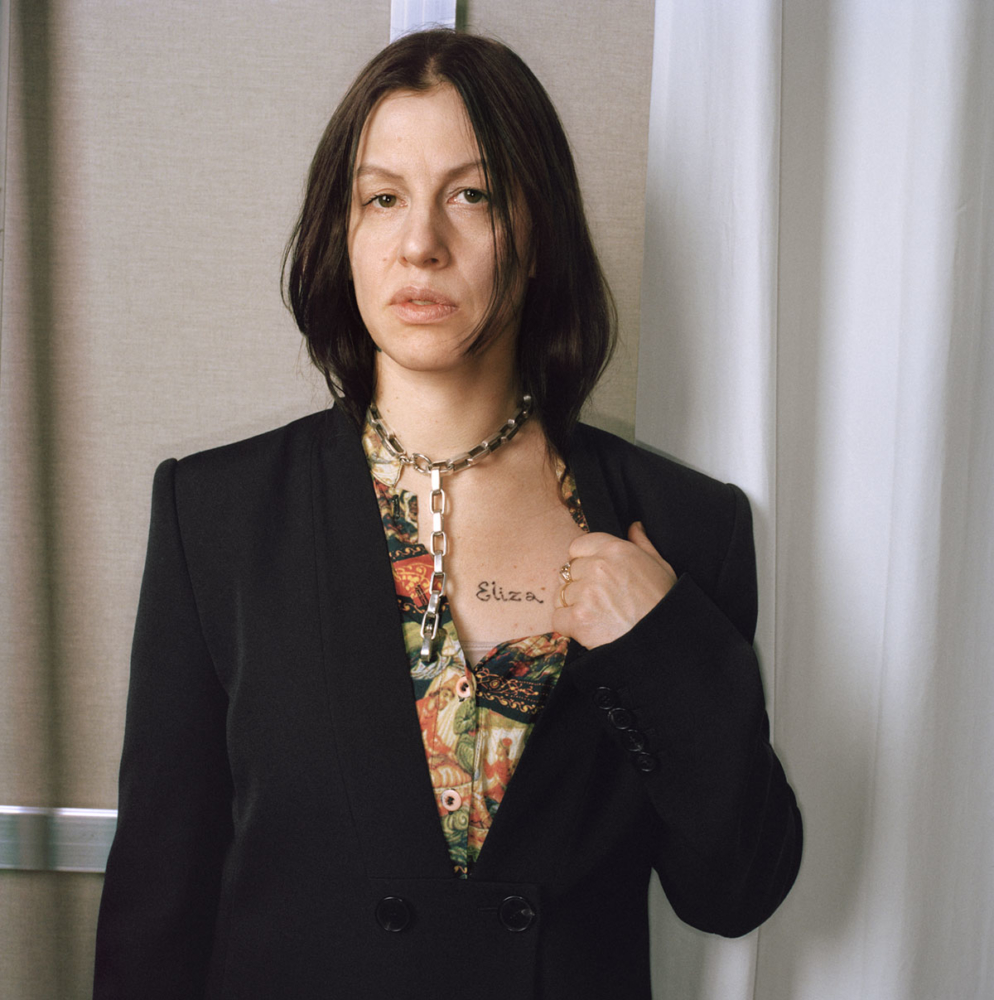
VOLKOVA: Is that when painting, drawing, and music started to grow into an interdisciplinary performance?
IMHOF: I was playing concerts at that time and I wanted the images to be an extension. I wanted to combine the visual works with the music and I was interested in the concert as a format. But my drawing routines were still there. I draw or doodle a lot—all the time, basically.
VOLKOVA: I want to ask you about your collaborations and how you select your performers. I find it so interesting that some of them are law students, choreographers, and artists. What do you look for when you cast your pieces?
IMHOF: I remember when I was doing my first piece, I wasn’t even cognizant that I was making anything that had to do with art. I had friends who played in a punk band and I cast them. I rented out space in a club. I was interested in doing a duel so I made this boxing setup. The band played as long as boxers were boxing, and the boxers had to box as long as the band was playing so there was this interdependency, and it was not so clear when it would stop. I was really kind of fascinated by this. But it wasn’t until way later that I developed a process where the pieces came together—photographing and creating images and drawings and then using that material to steer. My piece “Angst,” from 2016, was the first piece that was created in this way.
VOLKOVA: “Angst” was a live opera experience of music and performance.
IMHOF: It was the first piece where the music played a more important role. Billy Bultheel, Eliza Douglas, and I collaborated on the sound, chopping up pieces of music to make them more related to an opera. These pieces were marches or overtures or arias and we took them apart and put them on different smartphones so that people could play them from their phones during the performance. And then the performers could also sing along to the melodies or they could develop into something more concert-like. Screaming came in at a very important moment. We used some of these elements later in “Faust.”
VOLKOVA: Along with iPhones, you also used drones. I’m curious what role technology plays in your work.
IMHOF: Because these pieces were about five hours long, we needed some way to communicate to each other, to write each other, to make sure everyone was on time or right on cue—when to start a certain song or be in one part of the space. We started writing to each other in chat on the smartphones while we were performing a piece. It wasn’t rehearsed. There wasn’t a hard rule of what someone must do in a piece. So it was a tool for finding out how to do it in the moment.
VOLKOVA: How important is clothing in the development of a piece?
IMHOF: I was thinking that you might say something about this! It’s often a mix of what the performer brings and what I choose. Since Eliza joined the process, we have been choosing the costumes together. But I wouldn’t completely put a look on somebody who’s performing in my piece. We always try to make it fit the part.
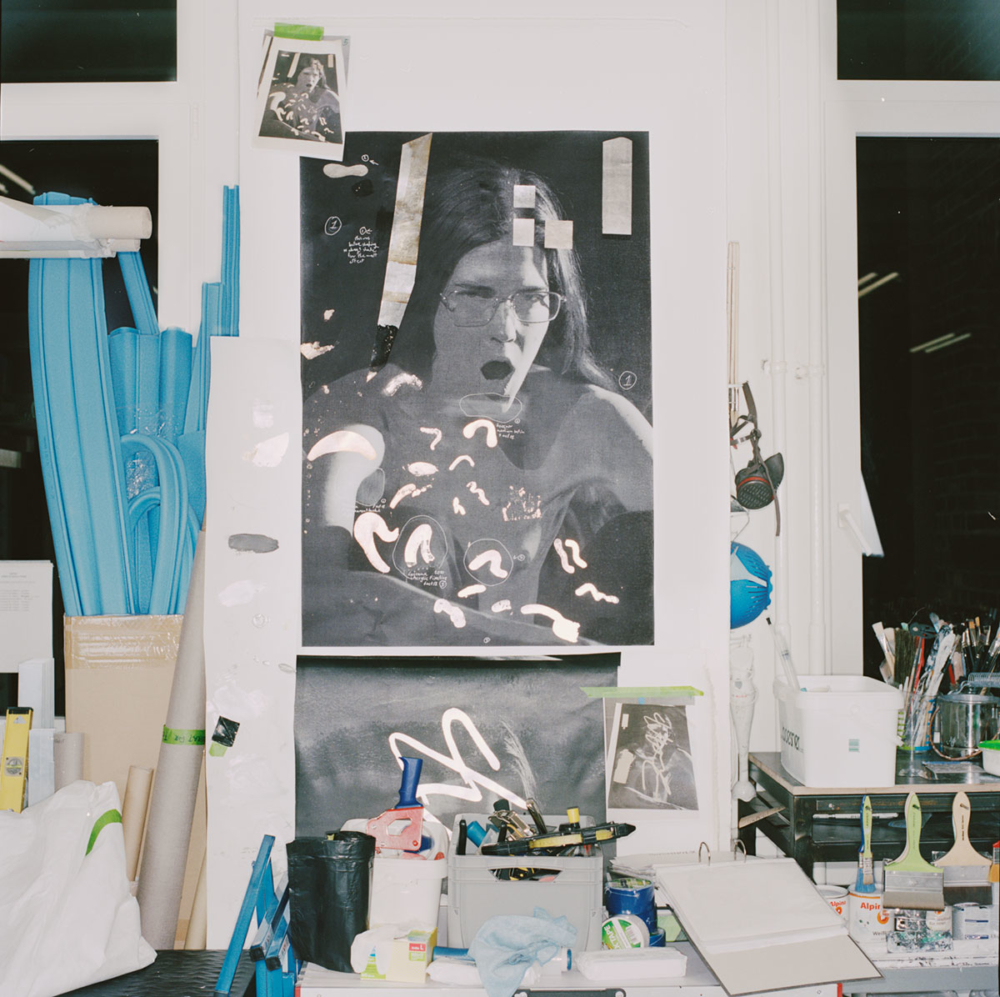
VOLKOVA: Playing with color and texture is very much like composing an image. Clothes are such a huge part of any photograph or video. I’ve been disappointed lately by a lot of cinema in the way that the styling of the movie is quite wrong a lot of times—particularly when they are trying to depict a certain era. Even movies set today don’t look believable to me. When certain details just don’t match, none of it feels real.
IMHOF: Yeah, I really am afraid of colors in this way. But they’re also almost an obsession of mine, the way someone can’t stop counting numbers on license plates. I’m always mixing colors together in my head when I see them. I’m thinking, “Okay, a bit of crimson, a bit of magenta, that makes this color.” But then in the studio, I usually just take the colors that are nearest to me.
VOLKOVA: Sometimes when I style a collection, after I’ve chosen my favorites, there isn’t much left and I’m like, “Okay, well why not? Let’s just put this together.” And I kind of love to let that go and have that moment of just having the colors that I would never ever normally mix together just go together. It works in a way you’d never normally expect.
IMHOF: Accidents happen a lot in collaborations—going into that unknown where you really devote yourself to the moment. In collaboration, something comes out of it that I can’t always say that something is good or bad. I can’t make that distinction. If there’s trust between people who create things together, then things can happen. In that zone of non-judgment, collaboration can be really good.
VOLKOVA: I remember we talked once about your appreciation of fashion and how you admired that it has this schedule where every six months something completely new comes out. It stuck with me that you admired that because for me I think of art as something so superior, untouchable, hyper-intelligent.
IMHOF: Art and fashion have so much to do with each other. But when I watch people work on a photo shoot, for example, I see something in fashion that I could never really do with art. There’s a way of being in the present, in the now, that I can’t approach. In making art, I always feel like I’m somewhere a little bit into the future or a little bit back in the past.
VOLKOVA: Fashion is a reflection of the times we are living in, whether it reflects, say, new technology or ’80s excess. Do you think art reacts to the time as well, or is it more introverted and personal?
IMHOF: There are so many different ways of doing art. But for me personally, it’s image creation that matters. The images that I use as an inspiration come very fast, and go very fast. Some of them stay in my studio, and I look at them again and again and they come from very different times. But it’s not just images. It’s words and poetry and the work of other artists.
VOLKOVA: Do you ever look at social media? I’m completely addicted to Instagram. I enjoy the constant image bombardment. It’s the first thing I look at when I wake up and the last thing I do at night.
IMHOF: I don’t use it much. It’s alienating to me. But for “Faust” in Venice, Instagram did come back into my life in a big way. People saw the piece and took pictures of it and framed it in their own ways. I was pretty touched by the experience of seeing how they framed it, like looking at a piece through their eyes. It’s like a shared archive of a piece. It’s like experiencing this undead moment where something fleeting becomes iconic.
VOLKOVA: I took quite a few videos of that performance—specifically the headbanging, which was pretty impressive. I went twice because it had so much energy to it.
IMHOF: Yeah, there’s a moment in “Faust” where the viewers and the performers are in the same moment. It’s not even a very pleasant moment, but nobody leaves. They just stay in it.
———
Makeup: Ute Hildenbeutel
Photography Assistants: Hudson Hayden, Stini Röhrs



